Not too long ago, I was checking my travel blog statistics, and I nearly choked on my chai tea. I’d had my highest traffic month EVER. Not only that, but because I track my traffic every month, I saw that my traffic had increased 100x in just 12 months—all organically. Not a cent of paid advertising, ever. I shared my win on a Facebook group I’m a part of to pop a bottle of virtual champagne with friends who would get what an exciting win that was. The response: a whole lot of celebration and also a lot of questions. How do I organically increase my web site traffic without advertising?
After all, I had done it: My monthly web site views increased from 257 to 23,000 in 12 months!
I examined the strategies I’d worked on over the 12 months of monumental organic growth. Now I’m sharing them with you.
Don’t quit: Blogging is a long-term commitment
I’ve been where you might be right now. When I just started To & Fro Fam, I was confident I was creating terrific content. I knew my destination recommendations and travel tips were helpful and actionable. I’m a professional writer and a decent photographer so I knew I offered high quality blog posts. But no one was seeing them.
Do you feel like that, too? Like you pour hours and and oodles of energy into creating terrific blog posts no one reads? Like you’re talking to an empty room?
I sure did—and I stuck with it. I’ve reached the other side, where I have a consistently healthy traffic flow to my travel blog. Now I’m sharing the 8 strategies to increase traffic to your blog—no matter what your niche is. (Mine is a travel blog, of course, but these strategies work well regardless.)
Are you ready to increase traffic to your blog without advertising? Let’s do this. Here are my top 8 strategies to increase traffic to your blog organically—without advertising.
1. Post consistently
When I was building traffic to my blog, I posted twice a week, almost without fail. In the two years since I’ve been writing To & Fro Fam, I’ve I missed posting a handful of times—that’s it.
I have been focusing on other family travel-related projects (big announcement later this spring!!) so have reduced my rhythm to posting once a week, but I’m still consistent.
Wondering why?
Why do I need to post consistently to my blog?
I know you’re busy, and I know life gets in the way. I also know that writing excellent posts, researching SEO (more on that in a sec!), creating pins, adding alt text to images and everything else that goes along with creating content takes a lot of time. You still need to be posting consistently if you want to grow traffic to your blog. Here’s why.
- Search engine algorithms prefer sites that update regularly. Research from Moz says that web sites that change more frequently—e.g. by adding new posts regularly—get a higher “freshness” score, which is probably factored into Google’s algorithm. That likely influences what the search engine serves up in its results, at least in some kinds of queries.
- More content = more entry points to your blog. Readers can discover your terrific content more easily if they have lots of options to find you!
- More content creates an interconnected ecosystem of posts on your blog. The more excellent posts you have, the more you can link back and forth, which helps readers continue to learn from you. Bringing your audience on a journey from one post to the next reduces your bounce rate (the percentage of people who leave after viewing only one page). A site’s and page’s bounce rate likely affects where Google ranks you in search results.
- When visitors spend more time on your site, that pushes your posts higher in search engine results rankings. Then even more people will find you (and thus more traffic)!
Your action item: Pick a posting cadence that is realistic and commit to it. Every month, decide what new topics each post will cover. Knowing what you’re writing about before you sit down to type will make you more efficient.
2. Research SEO—for reals
You might have heard that you’re supposed to target long-tail keywords in your posts. Targeting something like “street art in La Boca, Buenos Aires” has a lot less competition than a general term like “Buenos Aires.” That means you have a better chance of ranking higher in search results and therefore getting found.
But here’s the thing most people don’t tell you: How to target long-tail keywords people are actually searching for.
Through some trial and error, I realized the keywords I was randomly inventing in my head weren’t actually the terms typed into the Google search bar. Then I listened to several of Brandon Gaille’s podcast episodes on SEM Rush and was blown away. He shares how to find high volume, low competition search terms so you focus on writing content that a) people are hunting for and b) has a chance of getting found organically.
That’s not all, though.
The other day, I spent a half-day reading up on SEO. I clicked more than a dozen links to dive deeper into topics such as building backlinks, improving domain authority, html list tags and more. I also made a list of things to look into to improve my mobile loading speed.
Depending on how familiar you are with SEO, you might dip your toes in—or you might do a full-on cannonball into the pool of information. What’s important is that you continue to learn. There are always ways you can improve your site’s “findability” and therefore increase traffic to your blog.
What’s more, factors that go into your search results ranking constantly change. You might see other bloggers bemoaning the latest algorithm update—and I don’t blame anyone for being upset when their traffic dips. The reality is that search engines are continually making changes. So smart bloggers need to stay on top of the changes that will likely impact their traffic.
What’s more, it takes time for your SEO work to pay off. Experts estimate that it takes 3 to 6 months for great SEO efforts to show results. So the work you do today will net you more traffic down the line.
Your action item: One of the best ways to do that is set a recurring calendar event. Every month, set aside time to research a new aspect of SEO and then implement what you learn.
3. Build backlinks to increase your domain authority
Domain authority is basically the internet popularity contest. When a lot of people are talking about you, you’re perceived as cooler. The same goes for your web site ranking: When more sites link back to you, you’re perceived as more authoritative.
As a result, you’ll get more organic traffic—for two reasons.
Firstly, those backlinks increase your page’s authority, which likely influences where you end up in search result rankings. (I say likely because Google is very secretive about its algorithm, of course.)
Secondly, that other site’s audience will likely click on over to your site. That gets you more organic traffic, and you might just convert those folks into your audience, too.
I wrote a whole post about how to increase your domain authority. For more tips, head over there.
Your action item: Commit to contributing to at least one collaboration post in your niche each month. Write at least one guest post per quarter.
4. Share (and reshare) on social media
The average blog post takes 3 hours and 16 minutes to write, according to blogger surveys. But the best blog posts likely take much longer. The same research found that the number of writers who are taking more than 6 hours to write a blog post has doubled recently.
And how much time do you think the average blogger takes to promote that content on social media?
Answer: A lot less.
The thing is, why spend all that time creating stellar content if your audience doesn’t know about it? Yes, you want people to find you from organic search on Google and other search engines. But what about the people who already know, like and trust you?
Share your latest—and your not so latest—periodically. You’re not boring people with the same-old. Chances are, you’re reaching new followers with every post.
The best way to reshare on social media: Schedule your future posts right when you publish new content. With whatever social media scheduler you use, plan out not only that first post but also the ones to come. Include a tweet, an Instagram photo, a Facebook share—whatever—every few months for your newest post.
You’ll be happy you thought ahead, and your audience will be glad you resurfaced your content, too.
Your action item: Go back into your blog archives. What old posts are relevant today? Share some of that gold!
5. Use Pinterest to grow your traffic
It blows my mind when I find great content online that doesn’t have an image optimized for Pinterest. How many times have I gone to save something to a board, only to find that there was no pin? Way too many times.
You may already do this, but ensure you have at least several pinnable images for each post. If some of your old posts don’t have them, go back and create some. You’ll get organic traffic to your blog from Pinterest.
Traffic from Pinterest is likely to become even more important. Consider these Pinterest statistics: The number of active users on the platform increased by more than a quarter in 2019, and there are more than 2 billion searches in Pinterest on an average month, according to research.
Are you tapping into that opportunity?
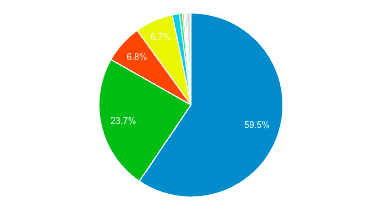
From this chart on my Google Analytics, you’ll see the blue—Pinterest referrals—accounted for nearly 60% of my blog traffic at the time of this screenshot. (FYI I captured it over the holidays, when I get more traffic from Pinterest than usual. Typically, my organic search traffic—i.e. referrals from Google and other search engines, the green color—is about equal to traffic from Pinterest.)
So if all your traffic is from Facebook or another source, work on Pinterest to get a healthy boost in your blog traffic.
Your action item: Evaluate how active you are on Pinterest. Are you pinning every day or using a scheduling app to consistently post? If not, schedule 10-15 minutes a day to post to Pinterest, share other blogs’ content or create pins for your site.
6. Update old content—strategically
Remember how the Google algorithm likes updates and fresh content? In addition to posting regularly, you should also refresh old content.
But don’t update old posts willy nilly. Don’t go chronologically, either.
What you should do: Update your high performing posts first to get the biggest payoff in organic traffic. Here’s how to strategically update old content.
A. Identify high performing posts.
A number of free tools will show you what your top posts are, and some tools show you where you rank in Google results for a given keyword.
I use the free version of SEM Rush. (I love the paid version, too, but its nearly $100-a-month price tag is out of my budget right now.) By searching your url, you’ll see your top organic keywords and the blog posts they correlate to.
Below is a screenshot of my own organic traffic to my blog. See how the keyword for “Florence Oregon” was ranking 11th when I took this screenshot, and the search volume for that keyword was 27,100 monthly? That shows me I could see a significant boost in organic traffic from that keyword if I improved the post enough to move up even one spot in the rankings.
(Why? Recent analysis from Backlinko found that less than 1% of searches clicked through to a link on the second page of Google results.)
See how analyzing your post performance and organic keyword rankings can help prioritize which posts to update?
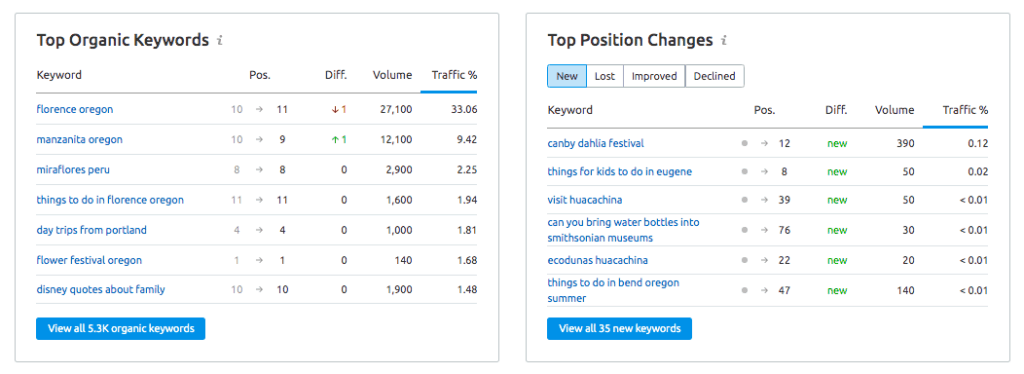
B. Analyze competing posts
Next, you’ll take a close look at the top 20 posts for the keyword(s) you’re trying to rank for. Look for patterns in these competing high performing posts. Do most of them use a certain keyword in their title? Do they cover an aspect of the topic you left out? Are they all longer than your original post?
With an eye to improve your post to be even better than theirs, outline how you’ll change your own content.
(To be clear, I’m definitely not advocating copying or plagiarism. This strategy is simply reverse-engineering your post to give Google users what they want.)
C. Make significant updates
Google pays attention to substantial changes to your old posts, but not small changes, experts say. So if you have an update and need to add a new paragraph, do so. Then consider tweaking some of the language in other parts of the body text, too. That will show Google your content is “fresher,” which may help your rankings in search results.
Remember, by investing energy and time into updating old content, you’re not aiming to make it a little better. You’re aiming to wow readers. That’s how you increase organic traffic to your blog.
D. Add new pins
As part of your fresh content procedure, add several new pinnable images. Pinterest is prioritizing fresh pins more than ever. That means its algorithm is more likely to show new images to searchers.
To take advantage, update old posts with fresh pins—especially ones that lead to your high performing posts. These are most likely to get an even bigger surge of organic traffic.
A real-life example: One day I was shocked by a sudden spike in organic traffic to my site. I looked a little closer and realized all those clicks were coming from a single new pin I’d made for a post I’d published months before. You never know which new pin is going to pay off in mega traffic, so you gotta continue trying. (For those who are curious, this is the pin that continues to bring me thousands of visitors.)
E. Make updating content routine
If this sounds like a lot of busywork, reconsider. Spending just an hour, or even a half-hour, refreshing an old post can net you major rewards in traffic.
But how do you remember to do it? The trick: You don’t!
Instead, make a recurring event in your calendar. Schedule an hour every single week to refresh old content. When it’s on your calendar, you don’t have to think about this strategy to increase blog traffic. All you have to do is execute.
Your action item: Set a recurring weekly event in your calendar to update old content—and don’t blow it off.
7. Learn every day
Algorithms and user behavior is changing constantly. You want to be aware of any changes so you can either adapt or take advantage of opportunities.
What’s more, other successful bloggers are paying attention. You can bet they’re tweaking their organic traffic strategies. To keep up, you’d better do the same.
In fact, the other day I (intentionally) fell down the SEO rabbit hole. I read up on SEO tactics for an entire day, making notes on how to improve my site speed, optimize images and other steps to make my site more findable and user-friendly.
Where else do I get fresh traffic tips? I listen to tons of podcasts. My favorite podcast about increasing traffic and other online strategies is Online Marketing Made Easy by Amy Porterfield. (And!!! Guess who got a shoutout in a recent episode on pivoting your business during the COVID-19 crisis? ME!) Her most recent episodes focus on online courses and webinars, but she has seriously great strategies about growing your audience that I can’t believe she gives away for free.
For super tactical, results-driven nitty gritty, I like The Blogging Millionaire by Brandon Gaille. I don’t love some of his style and delivery, and sometimes he gets a bit evangelist, but he’s great on SEO, headline formulas and keyword research. I learned *so much* from him!
For a more complete list of blogger tools I recommend, see my post on free resources for bloggers who want to grow their site.
And don’t stop at podcasts. So many books will help you too! That’s why I put together a list of required reading for ambitious bloggers. Add these to your shelves and read carefully.
No matter where you get your information, stay up to date on the latest ways to drive more traffic to your blog.
Your action item: Put a traffic-related podcast episode at the top of your queue. Order a book on traffic from the library or a bookseller. Google an SEO topic you want to know more about. You don’t have to learn everything all at once; every tidbit of knowledge you pick up can help you grow your blog.
8. Don’t freak out about fluctuations in traffic
Whether you’re reading this post when I wrote it—in the middle of the coronavirus pandemic—or much later, this lesson is important: Traffic fluctuates.
Like most travel sites, To & Fro Fam is getting much fewer clicks than before we were all talking about #quarantinelife. That makes sense—with shelter in place orders, you’re probably not planning a bunch of vacations.
But I’m not obsessing over my lower traffic numbers. There’s a season to everything, and I know traffic rises and falls.
You don’t need a global pandemic to witness traffic fluctuations. Many blog topics are at least partly seasonal. So anticipate your traffic won’t always be climbing, and you’ll be much less stressed when your site doesn’t perform as hoped.
Invest in free organic traffic strategies
Here’s the thing: None of the organic traffic strategies I shared here guarantee you overnight success. These tactics are all long-term investments in the future traffic to your blog.
It’s no fun to hear that it’ll take time to drive more visitors to your site. But it’s the truth.
I’m not going to tell you to not get discouraged when you don’t immediately see results. I’ve been there, and I know that disappointment all too well. But I’ve come out the other end. And I’m here to tell you that with consistent, strategic, research-based action, you will increase traffic to your blog without paying for advertising.
Have you seen other blogging strategies pay off? If I missed any, comment below with your own organic traffic tips!


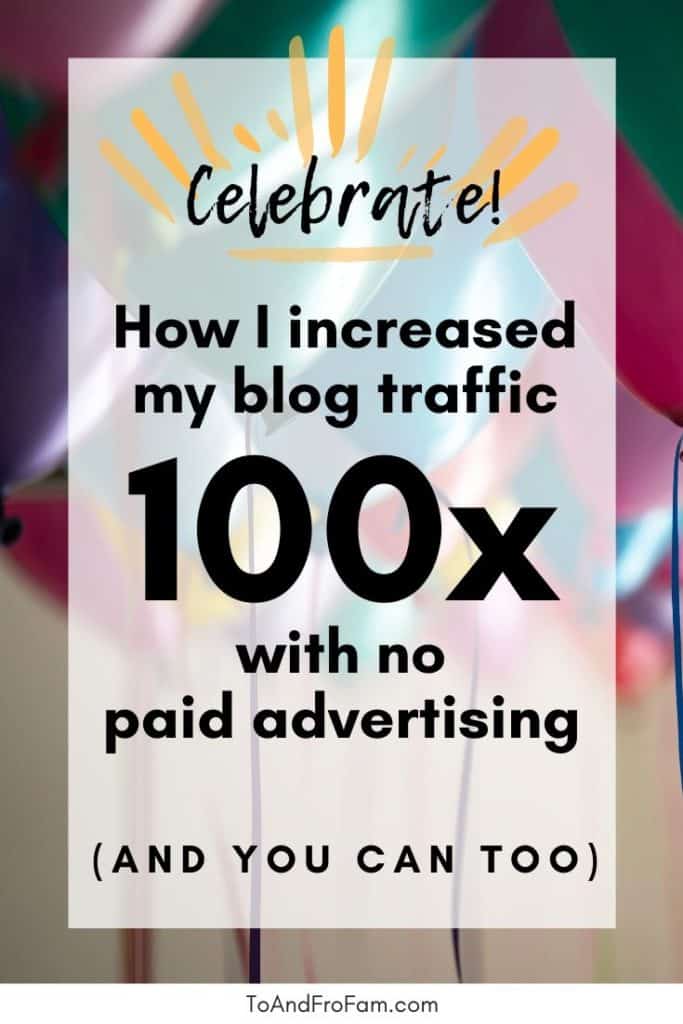







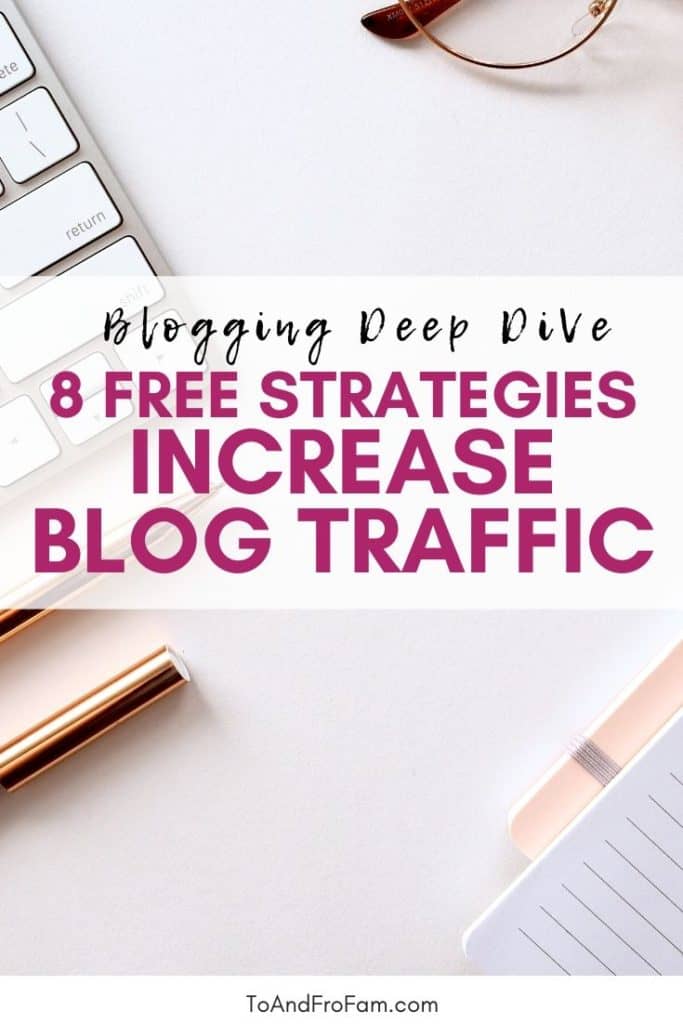
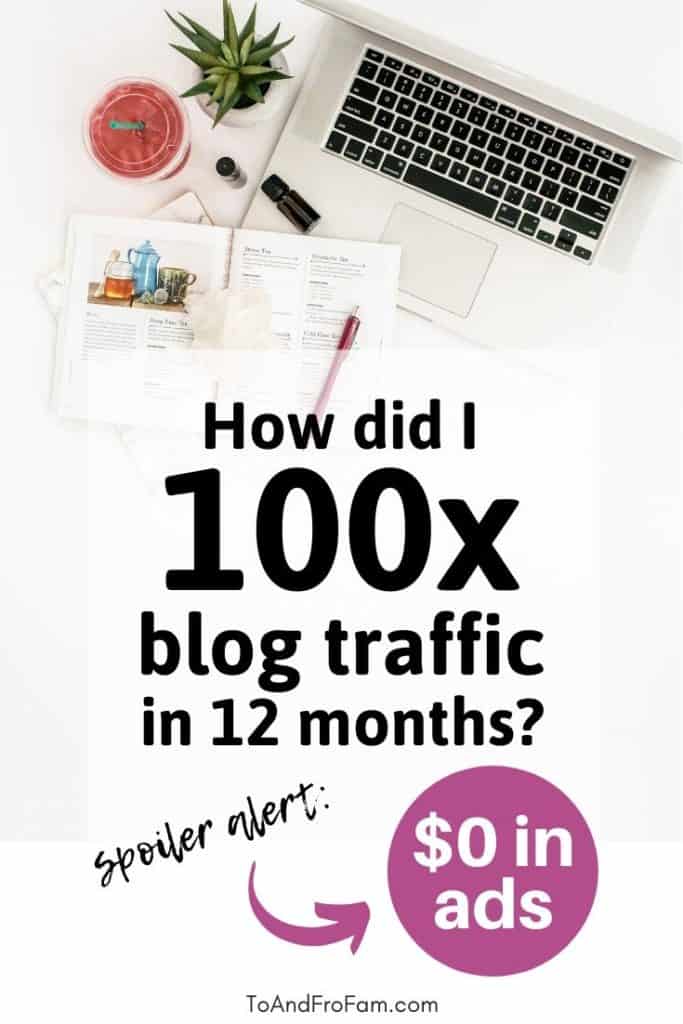

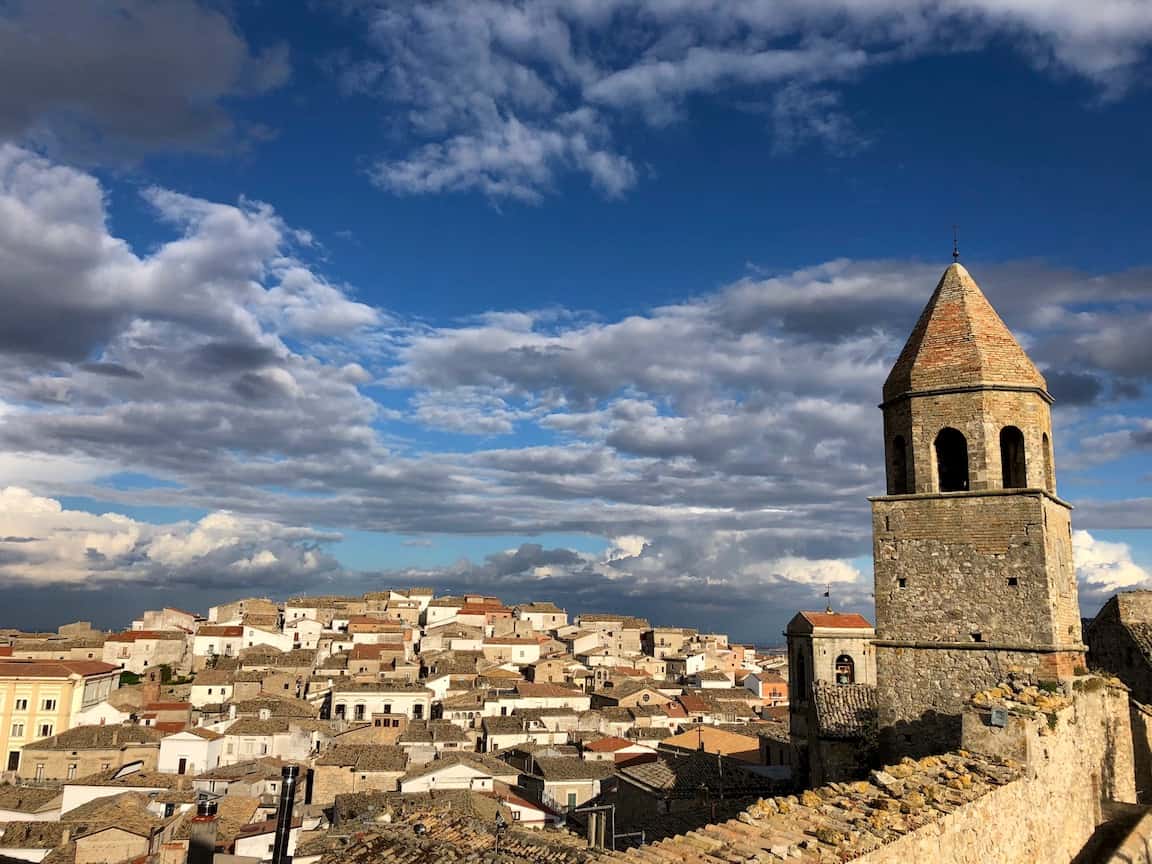

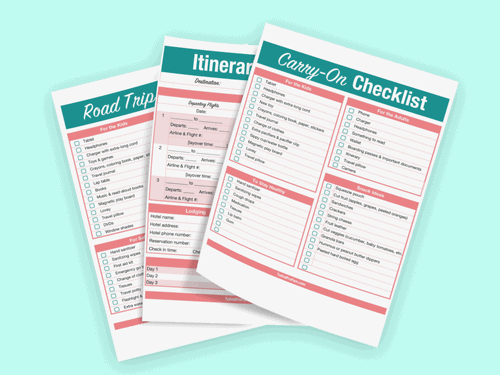


Wow, what an amazing overview with so many valuable resources you’ve put together, thank you! I started my travel blog a while ago but haven’t really invested in it as much as I wanted (it’s my secondary site). However, I’ve been investing more time and money in it recently so your advice comes just at the right time! Quick question about updating old content: I often see the tag ‘Updated [date]’ at the beginning of a post on other sites. Is this something you recommend? (If so, is there a plug-in for displaying the updated date?) Or do you simply change the original publication date? Or isn’t it necessary to change the date at all and is it enough for Google to ‘see’ you’ve updated the content? Thanks in advance for this extra bit of info! 🙂
Such great questions, Zarina! From what I understand, those “updated [time]” mentions are included manually. I don’t change the publishing date, but then again my blog format doesn’t show the original publish date anyway. (There’s a way to change those settings in WordPress and other platforms, I’m sure.) If the update is significant, I’ll usually change the display headline to show the update year. I hope that helps! Let me know here in the comments or email me directly if you have other Qs!
Soo many great tips in here. While travelling full-time, homeschooling the kids etc, it’s hard to commit to a structured blogging calendar. I will definitely set one up in the future once our travels slow down and we settle into a ‘house’ somewhere. I reckon I’ll be much more productive.
Yep, setting a publishing schedule or calendar is one thing – sticking to it is another altogether. 😉 Enjoy your travels!
Congrats on your traffic! That’s great Catherine! Some good tips here. The main thing I wish I started earlier in my blogging career was to get serious about SEO early on. I really didn’t until just about a year ago 😉 I love this industry because it’s always changing, and there is always so much that is new to learn every day!
Thanks Marlynn! Also, I totally empathize. There’s so much I look back on and wish I’d started earlier, but in truth I was just learning as I went. I sometimes get frustrated at the constant changes we bloggers deal with, but you’re right: There’s always something new to learn!!
Catherine, this is so helpful!! Thank you for sharing your hard earned knowledge, getting started on this list ASAP!
<3
You’re so welcome Hawnuh! Let me know if you have any questions, I’m always happy to help. 🙂
These are such awesome and neat ideas! I would have never thought to do some of these!
Kileen
cute & little
Yay! I’m always so happy when people say that. I’m constantly looking for fresh ideas of things to do with kids, especially during quarantine, so I’m glad this post is helpful.
This is so helpful post for increase the traffic.I am struggling a lot and few points I can take few points as a measure to improve my blog.
We’re all beginners at some point. I hope it’s helpful to look ahead and find some strategies you can adopt to grow your blog, too. Good luck Mayuri!
In these difficult times, it is so good to read about your experience and that these strategies have actually worked for you. Need such positive vibes. I love the pointers you have mentioned and will definitely try some of them on my blog. Thanks!
These are strange times for us travel bloggers – and even if traffic is dipping right now, we can put things in place to be well positioned when things return to normal. Hang in there, Ketki.
This was such a helpful post, thank you so much for sharing your tips and tricks.
As someone relatively new to blogging, I’ve found myself spending hours trying to piece together how to make the most of my posts in order to increase traffic, It’s so nice to have it all laid out in one place.
It’s also really encouraging to see that I’ve already adopted some of your tips, I’ve recently started posting consistently (once a week) and using Pintrest for every post. My next challenge is to tackle SEO, and this has been a really helpful starting point.
Way to go, Carly-Jo! I think your approach of tackling one thing at a time – and building on them – is so spot-on. That way you don’t get overwhelmed. I’m so glad my SEO tips are helpful. Keep at it!!!
First off, congratulations Catherine – That’s amazing. Second, this post is so helpful and informative and spot on. Thank you for sharing with us!
Thank you Erin, so glad you found the breakdown of increasing site traffic to be helpful. I’m really tactical so always prefer to read the nitty-gritty, how-to on other people’s blogs. It’s natural then that that’s the kind of post I wrote. 🙂
That’s wonderful! Keep up the great work! I love hearing other people’s stories. 🙂
Thank you! Yes, I agree that not only seeing someone’s end point – but also their messy middle – is most inspirational.
These are such great tips, I needed this! Saving to come back to so I keep making progress!
Oh good, Raina – so glad this post on blog traffic helped! Each of these steps can be layered, so don’t get overwhelmed if you can’t take them all on at once. Slow and steady!
There are so many great ideas here, especially the SEO tips. I can’t wait to try them.
Oh good, I’m so glad the SEO tips were particularly helpful. I hope these traffic building tips work for you too!
Loving this post and all your tips, thank you Catherine!
You’re welcome Katerina, so glad to help.
Great tips! I’ve been working on Pinterest, improving SEO and updating old posts. Hopefully it all pays off!
One of the biggest things I learned is that it DOES pay off in the long run—it’s just not a quick turnaround. Best of luck Jen!
It’s great that you share your experience! Thank you, this is the best information on this topic!
You’re welcome, John! I’m so glad these web traffic strategies helped.
Hi catherine,
This is very useful information. I have been searching for how to get organic traffic. This helps me a lot.
Glad it helped!